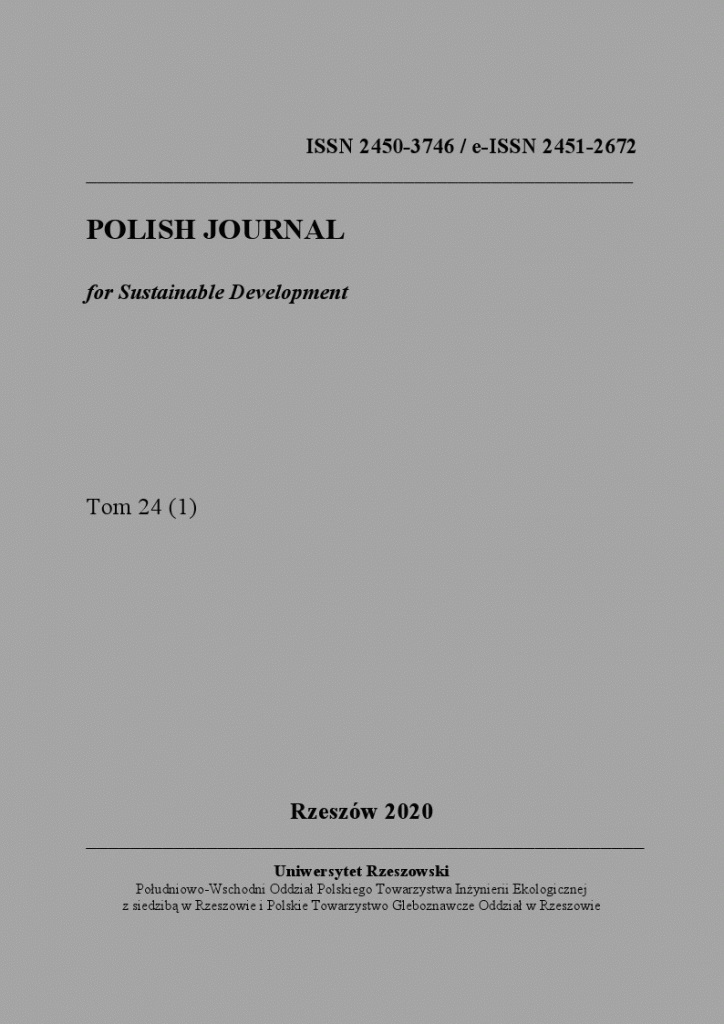Regional identity in spatial planning – Wielkopolska 2020+. Reflections and comment
DOI:
https://doi.org/10.15584/pjsd.2020.24.1.6Keywords:
regional identity, cultural heritage, spatial planning, voivodship spatial development plan, retardationAbstract
Regional identity is a special case of social and cultural identity. It refers to a clearly defined and delimited territory, its specific social, cultural, economic and topographic features that distinguish it from others. It can be presented in various approaches (psychological, urban-architectural, geographical, anthropological and ethnographic, historical, political, economic, sociological), which makes it possible to diagnose the state of identity in a specific region. The regional identity of Wielkopolska refers to the region, both physico-geographical and historical, located in central-western Poland within the Wielkopolska Lake District and the Wielkopolska Lowland. This area is also identified with the extent of its administrative ownership (Wielkopolska Voivodship). The region's development strategy is implemented through the voivodship spatial development plan. Its adoption belongs to the exclusive property of the voivodship self-government assembly. This plan defines, among others voivodship spatial development conditions, spatial development models and spatial policy. To a large extent, it is an indicator of the region's identity, which is especially visible in the case of planning arrangements regarding cultural heritage. Although it is not a generally binding act of local law, it nevertheless binds municipalities when drawing up their own planning documents. It creates an opportunity to protect areas and facilities of cultural tourism interest against degradation or complete destruction. An important message is the commitment to co-responsibility of local governments for the common space and its cultural heritage. To counteract the processes of landscape destruction through suburbanization processes conducive to the reduction of open areas in voivodship plans, the need to protect and promote natural and cultural landscapes is emphasized, which will enable, among others preservation of historical cultural landscapes. Keeping open areas as undeveloped in a situation of tremendous investment pressure may be an example of retarding the loss of regional identity, which however requires a lot of determination from local authorities. The use of biosphere space, its landscapes and ecosystems should be holistic. Just like retardation, which, if it would succeed, must be understood also as a self-limiting processes of the human population, not only as slowing the use of the environment resources.
Downloads
References
Blazy R. 2010. Wpływ planów zagospodarowania przestrzennego na wartość środowiska kulturowego regionu (spójność polityki przestrzennej z planami różnego szczebla). Architecturae et Artibus. Białystok. (6). 4. 27-34.
Kasprzak K. 2018. Turystyka w regionalnych dokumentach strategicznych województwa wielkopolskiego. [w:] B. Hołderna-Mielcarek, M. Zamelska (red.). Społeczno-kulturowy kontekst rozwoju turystyki i rekreacji w metropoliach. Studia Periegetica. Poznań. 2 (22). 33-48.
Kasprzak K. 2019. Wielkopolska 2020+ – ochrona dziedzictwa kulturowego i turystyka kulturowa w planie zagospodarowania przestrzennego województwa wielkopolskiego. Turystyka Kulturowa. Poznań. 6. 1-11. [dok. elektr. http://turystykakulturowa.org, portal popularyzacyjny: http://turystykakulturowa.eu/wp. data wejścia 3.06.2020].
Kasprzak K., Raszka B. 2018. Ochrona gleb w parkach narodowych poprzez plany ochrony. [w:] G. Malina (red.). Remediacja, rekultywacja i rewitalizacja. Polskie Zrzeszenie Inżynierów i Techników Sanitarnych Oddział Wielkopolski. Poznań. 43-65.
Macias A., Bródka S., Kubacka M. 2019. Granice i podział regionalny Wielkopolski w aspekcie hydrograficznym. [w:] A. Choiński (red.). Wody Wielkopolski. Wydawnictwo Uniwersytetu im. Adama Mickiewicza. Poznań. serie geograficzna. 103. 9-67.
Pawuła-Piwowarczyk R. 2013. Z lotu ptaka 1956-1965. [w:] H. Marcinkowski, W. Milewski, E. Pawłowicz, R. Pawuła-Piwowarczyk, Z. Skupniewicz, L. Wejchert, Projekt – Miasto. Wspomnienia poznańskich architektów 1945-2005. Studia Miejskie. Poznań. 151-179.
Raszeja E., Gałecka-Drozda A. 2015. Współczesna interpretacja idei poznańskiego systemu zieleni miejskiej w kontekście strategii miasta zrównoważonego. Studia Miejskie. Poznań. 19. 75-86.
Raszka B. 2010. Narzędzia retardacji przekształceń środowiska w gospodarce przestrzennej, Biuletyn KPZK PAN. Warszawa. 242. 109-120.
Raszka B., Kasprzak K. 2015. Metodologiczne aspekty rewitalizacji i rekultywacji w kontekście planowania przestrzennego – Esej. [w:] G. Malina (red.). Remediacja, rekultywacja i rewitalizacja. Wydawnictwo Polskiego Zrzeszenia Inżynierów i Techników Sanitarnych Oddział Wielkopolski. Poznań. 83-99.
Downloads
Published
Issue
Section
License
Copyright (c) 2020 Polish Journal for Sustainable Development

This work is licensed under a Creative Commons Attribution-NonCommercial-NoDerivatives 4.0 International License.


